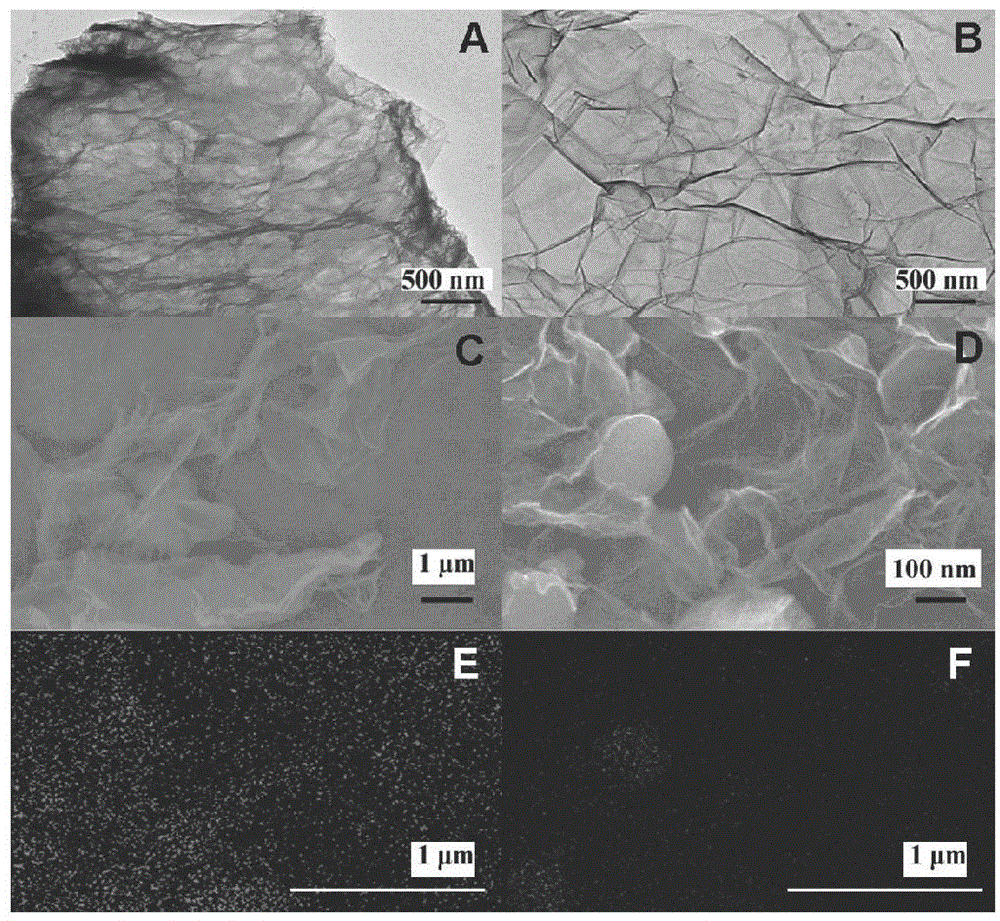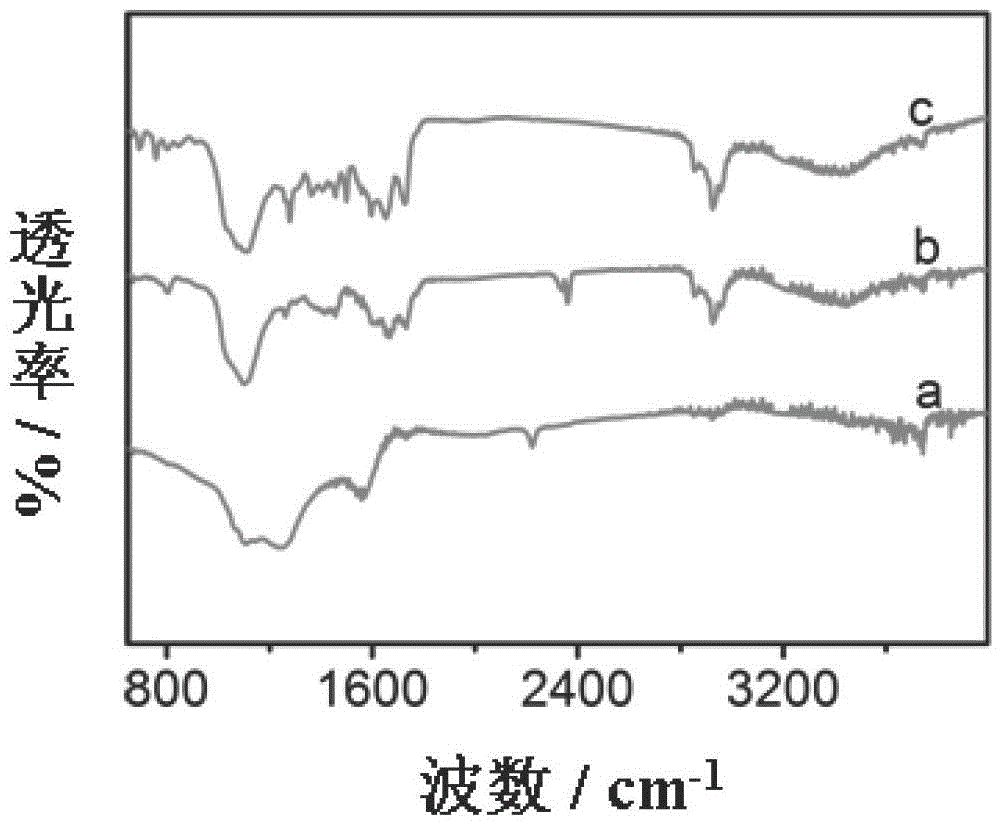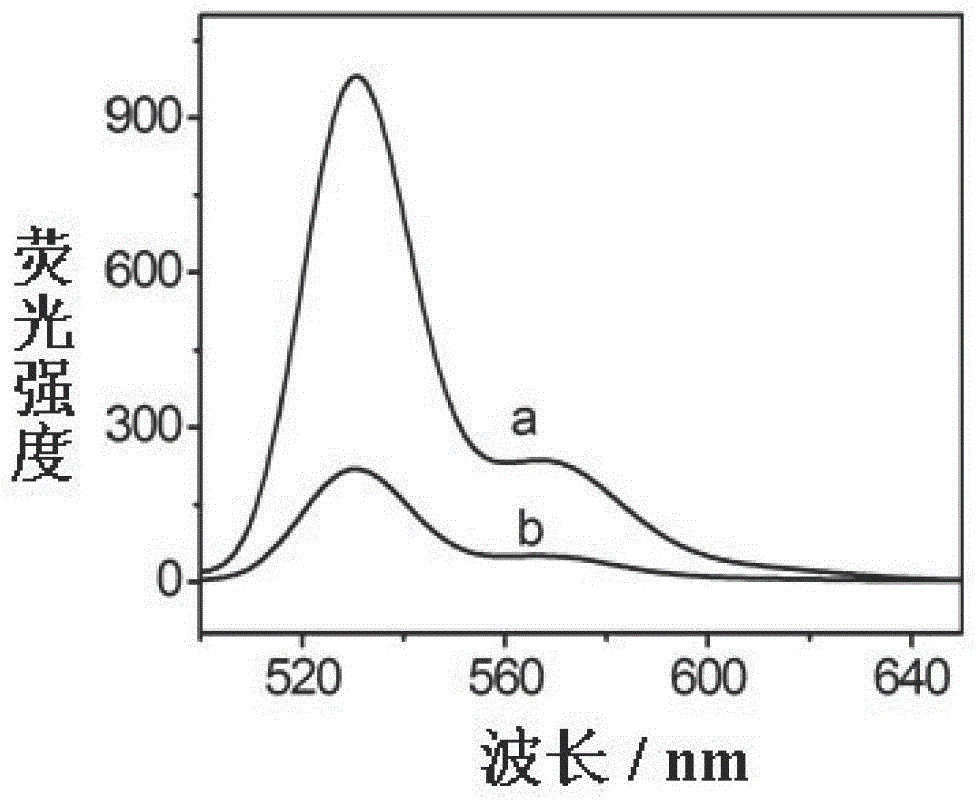A kind of preparation method of perylenetetracarboxylic acid-graphene heterojunction based photoanode material
A technology of perylene tetracarboxylic acid and graphene, which is applied in the field of preparation of perylene tetracarboxylic acid-graphene heterojunction-based photoanode materials, and can solve unfavorable probe molecules, covalent bonding, unfavorable photoelectrochemical sensors, etc. problem, to achieve the effect of improving comprehensive analysis performance and good optical stability
- Summary
- Abstract
- Description
- Claims
- Application Information
AI Technical Summary
Problems solved by technology
Method used
Image
Examples
Embodiment 1
[0016] Example 1: The preparation method of the perylene tetracarboxylic acid-graphene heterojunction-based photoanode material: firstly, the perylene tetracarboxylic acid is synthesized, and then compounded with graphene in a certain proportion. The synthesis process of perylene tetracarboxylic acid is as follows: first, add perylene tetracarboxylic dianhydride into 4% potassium hydroxide solution, and stir at 60°C until it is completely dissolved. Add 0.08 mol L dropwise with stirring -1 Hydrochloric acid solution until pH = 4.5 is obtained, wherein as the pH of the solution decreases, the formation of solid perylenetetracarboxylic acid is accompanied. After it was completely precipitated, it was filtered, washed, and vacuum-dried to obtain red perylene tetracarboxylic acid with a yield of 92.5%.
[0017] The specific scheme for preparing perylenetetracarboxylic acid / graphene heterojunction is as follows: First, prepare 0.05×10 -4 mol L -1 DMF solution of perylenetetra...
Embodiment 2
[0020] Example 2: The preparation method of perylene tetracarboxylic acid-graphene heterojunction-based photoanode material: firstly, perylene tetracarboxylic acid is synthesized, and then it is combined with graphene in a certain ratio. The synthesis process of perylene tetracarboxylic acid is as follows: first, add perylene tetracarboxylic dianhydride into 5% potassium hydroxide solution, and stir at 65°C until it is completely dissolved. Add 0.1 mol L dropwise with stirring -1 Hydrochloric acid solution until pH = 4.8 is obtained, wherein as the pH of the solution decreases, the formation of solid perylenetetracarboxylic acid is accompanied. After it was completely precipitated, it was filtered, washed, and vacuum-dried to obtain red perylene tetracarboxylic acid with a yield of 96.5%.
[0021] The specific scheme for preparing perylenetetracarboxylic acid / graphene heterojunction is as follows: First, prepare 1×10 -4 mol L -1 DMF solution of perylenetetracarboxylic ac...
Embodiment 3
[0023] Example 3:The preparation method of perylene tetracarboxylic acid-graphene heterojunction-based photoanode material: firstly, perylene tetracarboxylic acid is synthesized, and then it is combined with graphene in a certain ratio. The synthesis process of perylene tetracarboxylic acid is as follows: first, add perylene tetracarboxylic dianhydride into 6% potassium hydroxide solution, and stir at 70°C until it is completely dissolved. Add 0.12 mol L dropwise with stirring -1 Hydrochloric acid solution until pH = 5.1 is obtained, wherein as the pH of the solution decreases, the formation of solid perylenetetracarboxylic acid is accompanied. After it was completely precipitated, it was filtered, washed, and vacuum-dried to obtain red perylene tetracarboxylic acid with a yield of 97.5%.
[0024] The specific scheme for preparing perylenetetracarboxylic acid / graphene heterojunction is as follows: First, prepare 2×10 -4 mol L -1 DMF solution of perylenetetracarboxylic ac...
PUM
 Login to View More
Login to View More Abstract
Description
Claims
Application Information
 Login to View More
Login to View More - R&D
- Intellectual Property
- Life Sciences
- Materials
- Tech Scout
- Unparalleled Data Quality
- Higher Quality Content
- 60% Fewer Hallucinations
Browse by: Latest US Patents, China's latest patents, Technical Efficacy Thesaurus, Application Domain, Technology Topic, Popular Technical Reports.
© 2025 PatSnap. All rights reserved.Legal|Privacy policy|Modern Slavery Act Transparency Statement|Sitemap|About US| Contact US: help@patsnap.com



